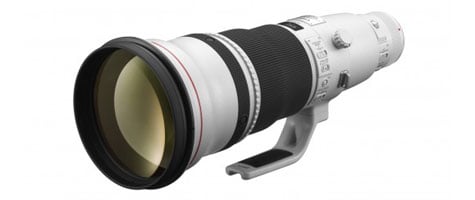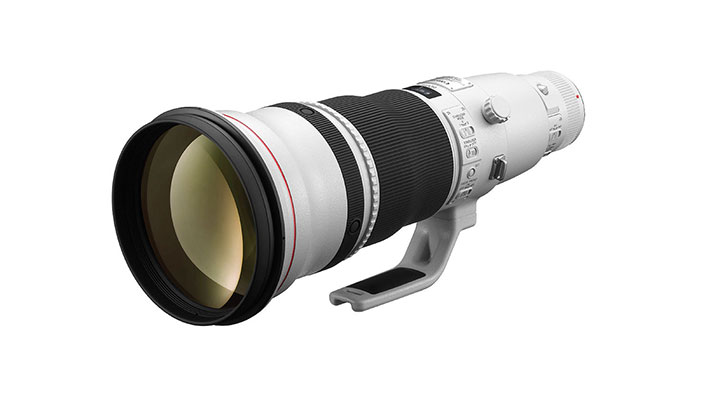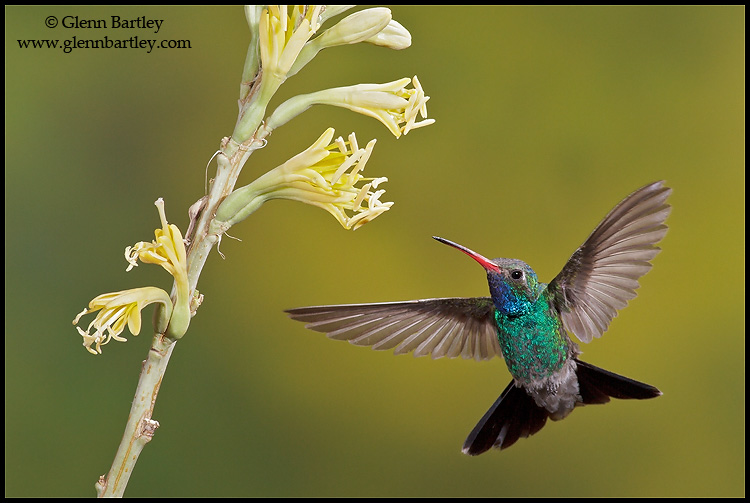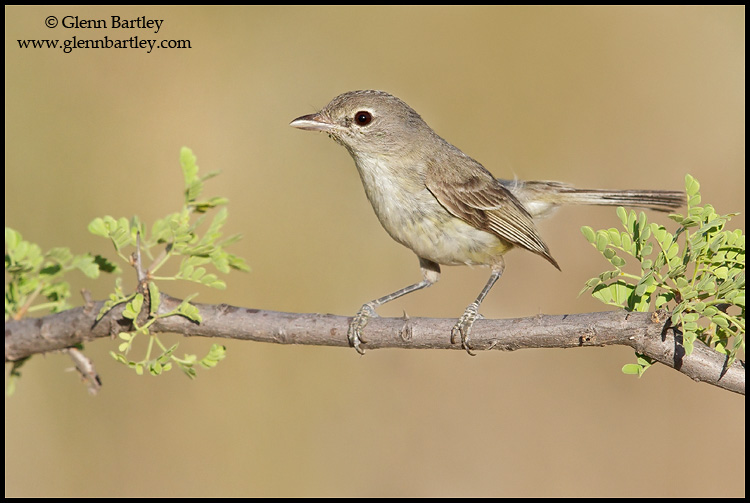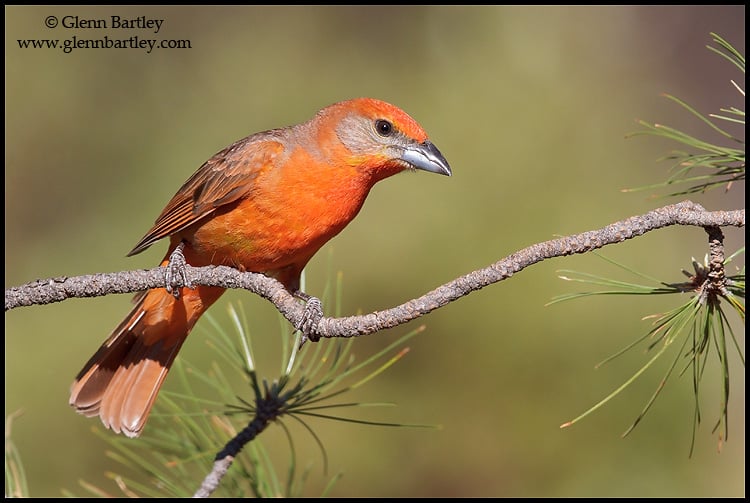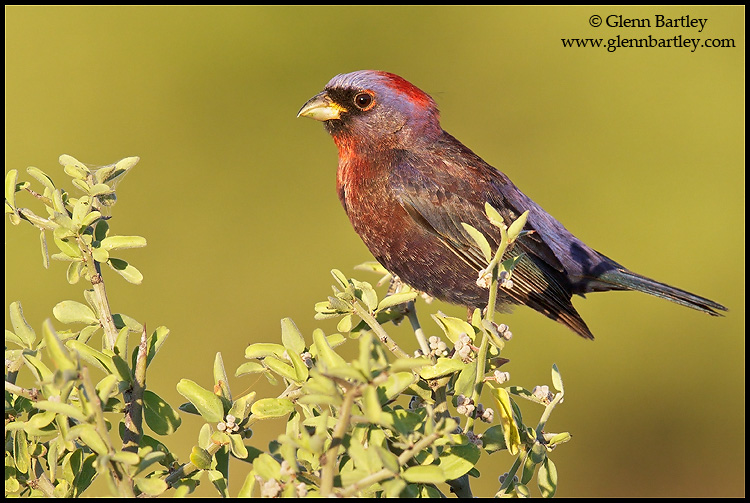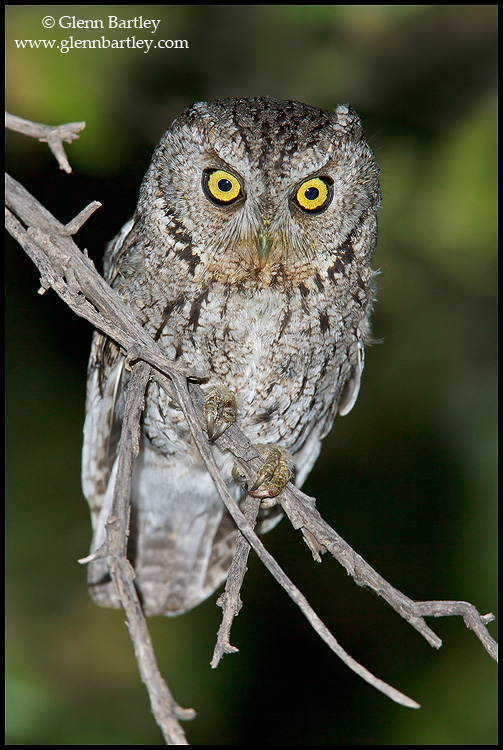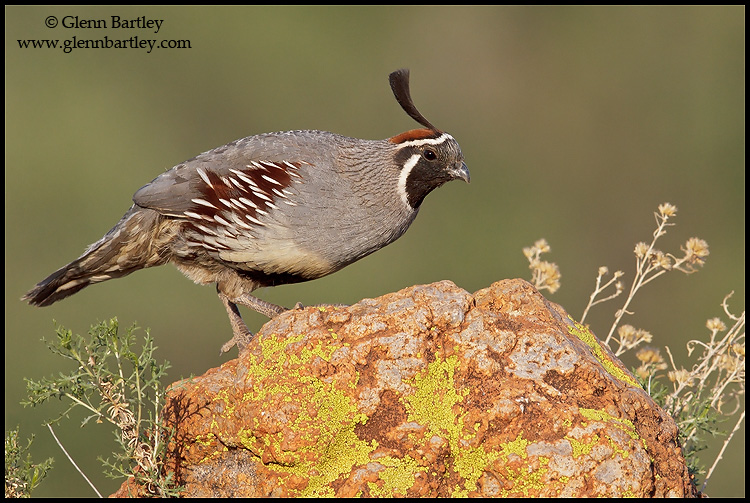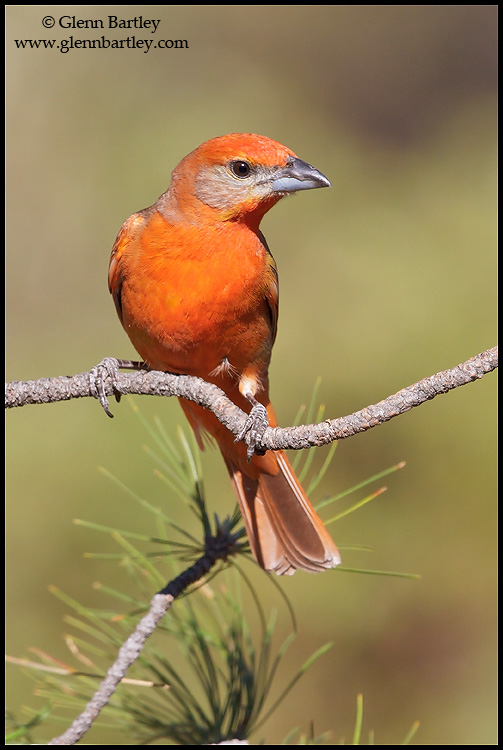Review – Canon EF 600mm f/4L IS II
By: Glenn Bartley | Twitter | Web Site
Discuss the Canon EF 600mm f/4L IS II
Introduction
As a professional wildlife photographer my primary lens when heading out in to the field has to be a super-telephoto. I have no choice in the matter as the small and shy subjects will simply not be possible to photograph with any other focal length. When we talk about these super-telephoto lenses we are referring to fixed focal length lenses that are longer than 300mm (although the 300mm f/2.8 also may be considered a super telephoto). Because my work is primarily focused on birds I tend to lean towards the long end of the spectrum and for many years I have relied on the Canon 500mm f/4 to be my workhorse lens. It has never disappointed me and I am still astonished at the image quality that this lens is able to produce. The 500mm seemed to me like the perfect lens. It is light enough to hand hold for flight shooting and focuses as close as 14 feet. On the other hand the 500mm's big brothers the 600mm and 800mm were too heavy and have minimum focusing distances that make them impractical to use in the types of rainforest environments that I often find myself in.
All of this changed when Canon recently released their series II super-telephoto lenses. In these new products Canon has been able to dramatically reduce the weight and minimum focusing distance of these lenses. They also radically increased the price tag! The temptation to upgrade to a longer lens was beginning to grow and I was very interested to see if the outrageous price tag could be justified. After all why spend twice as much on the new version?
Lens Rentals was kind enough to let me take the new 600mm lens into the field on a recent one week trip to southeastern Arizona. In this review I hope to shed some light on what I found and offer some information for those in the market for a super telephoto lens.
Build
As you would expect in a lens that costs well over $10,000 the build quality of the Canon 600mm f/4 L IS II is superb. But then again there were very few things to complain about on the previous version. In the version II lens though Canon has been able to make the shell of the lens entirely of magnesium / titanium which allows for the weight savings over the previous version. Canon also claims that the new lens features better dust and waterproofing through the use of rubber O-rings on the lens mount and focus ring. Manual focusing is effortless on the new lens as the focus ring is incredibly smooth to operate (although perhaps this is because I am used to using a 10 year old lens). The design of the tripod collar does seem to have been improved and features extremely smooth operation with easy-to-operate tension control.
Switches on the side of the lens will be familiar to previous users of the Canon super-telephotos. Only two changes have been made to these controls. The first is that Canon has introduced a new stabilizer mode 3 (more information below). The other addition is the new PF or “power focus” setting. This setting “allows you to drive the autofocus motor electronically instead of having to use the focus ring. It is aimed at users shooting HD EOS Movies with their DSLR cameras as it makes it possible to produce a very smooth and controlled focus pull from one focus distance to another”*. (*Canon USA)
Specifications
The weight savings is the biggest and most worthwhile change in the new series II telephoto lenses. It is especially noticeable in the 600mm with the new lens being over three pounds lighter. Three pounds may not sound like all that much and in many cases it is not. But when it comes to lugging around a lens all day in the field, or trying to hand hold one of these monster lenses, three pounds is a BIG difference. The other very noticeable advantage of the new 600mm lens is that the minimum focus distance has been reduced by 3.27 feet. Again this is a tremendous advantage when working in the field. Users of the new 600mm will benefit from a much higher magnification factor (essentially allowing you to get closer to your subject and get more pixels on the subject). At the end of the day the new 600mm is essentially like using the old 500mm except with a bonus 100mm.
Some people may be tempted to think that 100mm is not really a significant increase in focal length. For example, not significant enough to upgrade to a $12,000 lens. When we look closer at the numbers though it becomes evident that this 100mm can result in a much larger subject in the frame (i.e. more pixels on the subject). For example, a 600mm lens gives the user 20% more magnification but this translates into 44% more pixels on the subject (due to the fact that we are talking about area). Or if you want to get mathematical:
- o 6002 = 360,000
- o 5002 = 250,000
- o 360,000 / 250,000 = 1.44
Or to use another example:
An object that is 10 pixels long in the frame when using the 500mm would be 12 pixels long with the 600mm.
- o 102 = 100
- o 122 = 144
- o 144/100 = 1.44
Canon Super Telephoto Lens Comparison Table
|
LENS |
WEIGHT |
MIN FOCUS |
MAGNIFICATION |
|
Canon EF 500mm f/4.0 L IS II |
7.04 lbs 3.19 kg |
12.14 ft 3.7 m |
0.15x |
|
Canon EF 500mm f/4.0 L IS |
8.54 lbs 3.87 kg |
14.77 ft 4.5 m |
0.12x |
|
Canon EF 600mm f/4.0 L IS II |
8.65 lbs 3.92 kg |
14.77 ft 4.5 m |
0.15x |
|
Canon EF 600mm f/4.0 L IS |
11.83 lbs 5.36 kg |
18.04 ft 5.5 m |
0.12x |
|
Canon EF 800mm f/5.6 L IS |
9.86 lbs 4.47 kg |
19.68 ft 6 m |
0.12x |
Accessories
The lens comes with the enormous ET-160W lens hood which serves to eliminate lens flare and also protects the front element. It will also result in a lot of extra attention when you are in the field and many people asking you if you are shooting for National Geographic.
The lens also ships with its own hard sided case (although most users will likely wind up using a roller bag or backpack).
The Canon 600mm f/4 L IS II also includes both front and rear caps. While lightweight and effective the front cap is a very tight fit and does seem a bit “cheap” for a piece of equipment at this price point.
Most users will likely want to add some kind of protective lens cover and a quick release style foot or plate.
A bit on Image Stabilization (from Justin's text)
“Optical Image Stabilizer technology makes hand-held photography more practical at slow shutter speeds*” (*Canon USA). IS helps free the camera and photographer from the tripod and gives you a bit more latitude to how and where you shoot. As a guide, it’s suggested that photographers’ shutter speeds should match the apparent focal length of the lens. So ideal shutter speeds on a full frame camera like the 1DX, 5DMKIII, or 6D, would be about 1/300th of a second at 300mm – of course this has no bearing on stopping motion or action. On a crop body like the Rebel series, 60D, or 7D you’d be looking to multiply that by the crop factor of the camera (1.6x) so 300mm would be 1/480th of a second, this make sense as the apparent focal length is magnified, so are any potential shakes. The IS advantage, then, is to allow yourself a bit more working room to achieve sharp images. The stabilization compensates for movement and shake, effectively correcting the slight changes the photographer introduces into the image through movement. 4 stops *technically* brings the 1/300th rating down to 1/50th of a second, though excellent technique is still recommended and, again, this won’t’ stop your subject from moving. Obvious advantages to this are people working indoors, where lighting is limited and you don’t need sports-level action stopping shutter speeds.
The mode switch allows for three types of stabilization:
- Mode 1 is for “regular” use which corrects for vibrations in all direction
- Mode 2 compensates for moving subjects or panning where there is a bit of fluidity and motion already being introduced to the lens to capture an image.
- Mode 3 “Corrects vibration only during exposure. During panning shots, corrects vibration during exposure only in one direction the same as MODE 2*.” [Canon USA].
There’s a focus preset button so you can set a specific focusing distance and return to it at any time by rotating the “Playback Ring” (a grooved metal ring between the focus ring and the front rubber grip). The front rubber grip also has four equally placed AF stop buttons which temporarily pause autofocus.
In the Field
The first thing that I noticed when I got to Arizona and started shooting was that I found myself using the lens without the 1.4x teleconverter that is normally fused to my lens. While there were certainly subjects that did require the 1.4x for the most part I found that 600mm was sufficient. This led to two major advantages in the field. The first was that the image quality is always better when not using a converter (especially if shooting wide open). The second was that I really needed that extra stop of light! Although you may think of Arizona as being a sunny and bright place, the truth is that I was often shooting in shaded canyons to avoid the harsh light and I needed every bit of shutter speed I could get. The extra 100mm really came in handy for me on this trip!
As expected the 600mm lens focused quickly, silently and accurately. Being used to the already wonderful 500mm lens that I already own I did not notice any real improvements here. Certainly nothing that would be worth upgrading for alone.
Lenses of this focal length are designed and intended to be used on a tripod. There are however times when photographing moving subjects where hand holding is definitely the way to go. I did not do any flight shooting while I was in Arizona. I would say though that given that the new 600mm is the same weight as my old 500mm I would not anticipate any challenges with hand holding this lens for short periods of time. While I cannot comment on the focus tracking ability of the lens I will say that the weight of this lens feels more balanced somehow and may actually be easier to handhold than my old 500mm. Furthermore, the extra two stops of image stabilization are sure to help when photographing birds in flight (especially at slower shutter speeds).
Image Quality
The image quality that this lens produces is nothing short of astonishing. It is hard to imagine how a 600mm lens could be any better. It is likely the case that the only lenses in the canon telephoto lineup that rival the new 600mm lens are the 300mm f/2.8 and 400mm f/2.8. It should be noted however that the previous version of this lens was also amazing. We really are comparing apples to apples here. While I did not do any controlled testing of the image quality the general consensus seems to be that the new 600mm offers some very slight optical improvements over the previous generation (especially at the edges and when using the 2x teleconverter).
Who it’s for
A 600mm lens obviously has a fairly limited target market – primarily wildlife and sports photographers (although the latter would probably lean towards the 400mm f/2.8). What we as wildlife photographers need is focal length – and lot’s of it! These long lenses with wide maximum apertures also allow us to isolate their subject from the background by providing pleasing blurred out backgrounds.
Dedicated wildlife photographers who have decided to invest in a super telephoto lens essentially have three choices these days – 500mm, 600mm or 800mm. There is no perfect fit for everyone and, for some photographers, the lighter and smaller 500mm will certainly fit the bill. It does seem however that the new 600mm has made the 800mm for the most part obsolete. After all, why would anyone want an 800mm f/5.6 lens that only focuses to 19.68 feet and costs more than the 600mm that focuses closer and accepts teleconverters so well?
Who it's not for
This is definitely not a lens for the weekend warrior to start with. Those considering buying their first long lens would be better off starting with a shorter focal length such as the Canon 300mm f/4 L IS and then “graduating up to the bigger glass.
The other major consideration has to be the sheer weight of this lens. When you consider that you will also need to carry a sturdy tripod, gimbal head, flash, camera body, etc. the entire rig will still wind up weighing in at well over 15 lbs. As incredible as this lens is it could also act as an anchor if the user is not able to carry it in the field.
Conclusion
What a treat to be able to use this lens for an extended period of time for real world testing. There is basically nothing that I did not like about the lens. It is at the top of its class in every regard.
When it comes to bird photography more focal length is always a good thing. This is especially true if you do not have to sacrifice weight or minimum focus distance. Having the luxury of being able to put more pixels on distant subjects, to not be forced to approach as closely to skittish wildlife, or to be able to choose to not use a teleconverter are all tremendous advantages.
For those who already own the older 600mm lens the decision becomes slightly more clouded. The new lens does not bring any real world sharpness advantages over the older version. The decreased weight and minimum focus distance however may just be worth the cost of the upgrade.
Perhaps the proof is in the pudding on this one? At the end of my week long shoot in Arizona I was certainly convinced of the merits of this lens and placed my order for one as soon as I returned home.
Purchase Options:
- Canon EF 600mm f/4L IS II:Adorama
Pros:
- Fast and accurate autofocus
- Improved image stabilization (now 4 stops instead of 2)
- Best in class optics – sharp at all apertures and accepts teleconverters very well.
- Dramatically reduced weight and minimum focus distance over previous generation lens
- Improved weight distribution over previous version
- Improved tripod collar
- Exceptional build quality
Cons:
- Weight – despite the reduction may still be too heavy for many users
- Shockingly expensive
- Supplied lens cap is a very tight fit. Perhaps could have been designed better.

